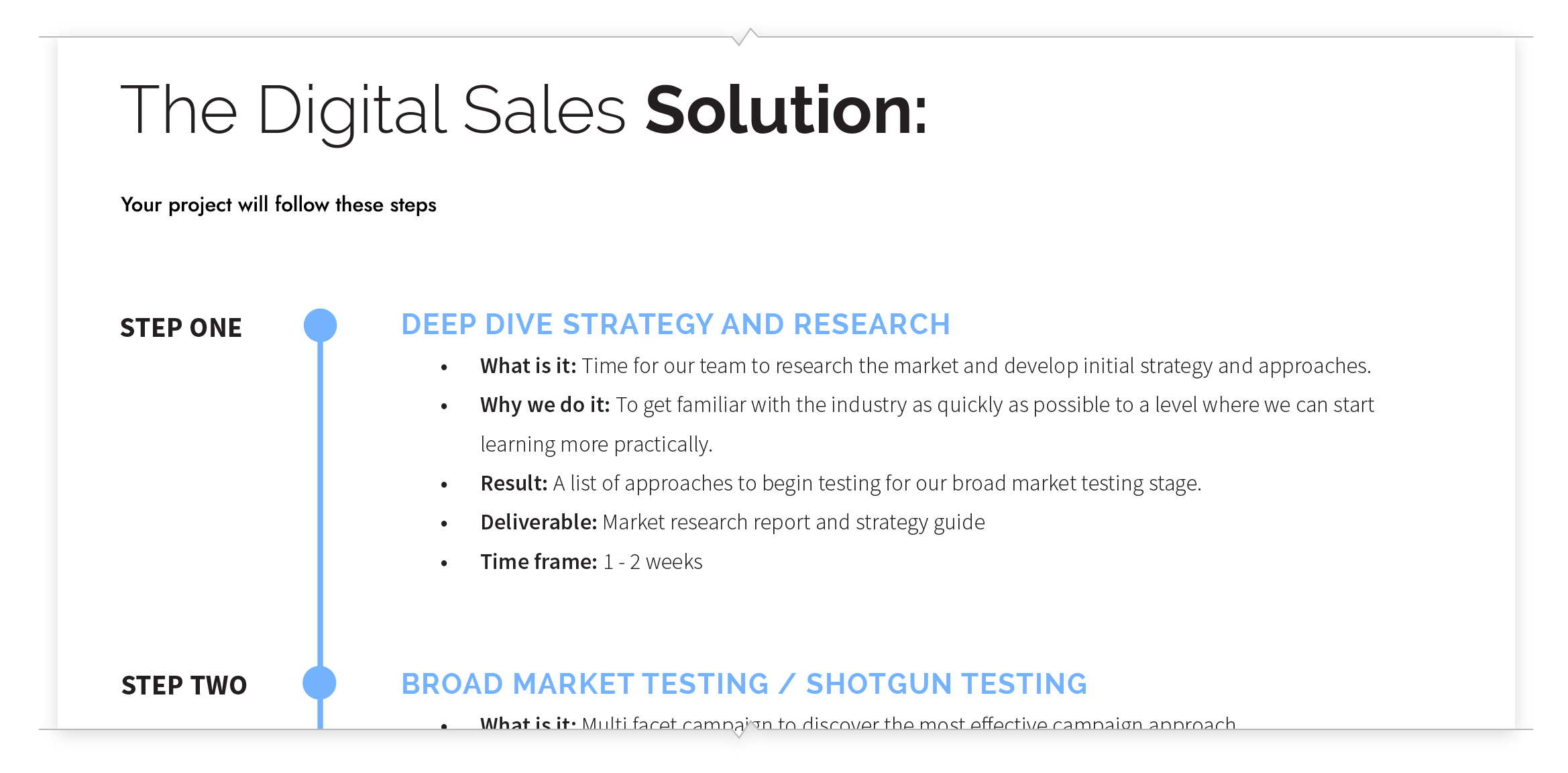When we (my wife and I) first got started with our digital agency we had no idea what we were doing. Neither of us had any experience working in an established agency, so, everything we did was new. Mostly, figuring it all out as we went along.
One critical part of delivering a service we mistakenly overlooked for years was the onboarding process. The first few stages of a new client project went like this:
- Initial contact and project discovery
- Proposal sent and accepted
- Agreement sent with first invoice
- We would get to work (even if the payment wasn’t made yet)
We thought this was working fine, aside from the often-delayed payments that tended to make us a little nervous.
The results of our ignorance
Once our project list and client base started to grow, we started to notice more and more holes in our unknowingly low effort approach to onboarding. Such as.
We have had client’s cancel a project because they could not pay, even though we had spent many hours on strategy, concept designs, etc.
We have let thousands and thousands of dollars’ worth of work go unpaid due to revisions, variations, and scope creep.
We have spent hours and hours mediating with client’s over their dissatisfaction, due to poor communication and miss guided expectations.
Weeks and even months waiting on clients to deliver content, resources or provide feedback. Plus, plenty of days where team members have had little to nothing to do due hold-ups on projects.
We have had projects go well over their expected delivery dates due to these delays.
From ignorance to realisation
It was one thing first identifying these individual recurring problems and what they were costing us. We certainly did make changes to try to fix them individually. We changed payment terms, set limits on revisions, added penalties for client delays. All things that did not add to a positive user experience and were more of a catalyst for disputes.
It was a whole other revelation when we realised that all these issues were linked. After adopting some scientific methodology.
One of the biggest causes of this realisation was identifying that the client was not always on the same page as us. And that it was 100% our job to make sure that they were. That they understood what would happen at each stage and their role in it.
We then had the thought that to be on the same page we needed start on the same page. That is where client onboarding became a big part of our focus with new clients and projects.
What we did to improve our onboarding
Our focus started by having a clear and open discussion with new clients from the start. We tried to dive deeper with questions to discover their actual need. What a successful project would look like and what it would mean for them.
With clients that were more open clients put it all out on the table. We broke down every step of a typical project and worked with them to personalise it to their project. We clearly laid out their responsibilities and that we would hold them accountable for.
We were trying to learn, and it started with experimentation. It took some time, but we gained a better understanding. We were then able to refine our process, minimising impact on the client and automating a lot of the process.
I am sure there are plenty more improvements that can be made. However, here is how our process of onboarding looked after a few revisions:
1. Initial contact and project discovery
- Which included:
- Key questions and communication that identified potential issues, clarified any misunderstandings, and set realistic expectations.
- Result:
- We obtained a better understanding of their actual underlying needs and made it a focus of the project.
2. Proposal and Agreement sent with payment details
- Which included:
- Key dates, timelines, and allowances.
- A personalised guided walkthrough of what their project journey would involve (Example in Fig 1.).
- Guidance on how to help the project go smoothly and how not be a bottleneck.
- Clearly defined deliverables at each stage of the project. Which, we included in our agreements and referred to throughout the project.
- Easy way to make payment (sometimes with discounts for early payment). And a clear note stating that work would not commence until payment is made.
- Result:
- The client had a complete understanding of our process which made them more comfortable choosing us i.e., we won more jobs.
- Less time spent updating project progress, we just directed them to were we were in the journey.
- Less disputes as we and the client were always on the same page.
- Client paid sooner and were happier with the addition of the unexpected discount.
3. We would get to work
- Which included:
- Weekly status reports, even if it was just one line.
- Transparency on project platform via a shared high-level task dashboard.
- Result:
- We were more proactive and less reactive. Meaning clients were less frustrated by being left in the dark.
NOTE: This made a big positive difference to how our agency business ran and grew. There are of course always exceptions, every project did not run perfectly. You still have clients that have issues on their end or have unrealistic expectations. Or, mistakes we still make as an agency. Plus, there are variations that can inevitably happen.
How our revenue and profits increased 👍
Now for the fun stuff, how did it impact revenue and profits? In the more obvious ways, by solving the problems described earlier the following made a big difference.
- We spent less time working on unpaid revisions.
- We were able to focus more on paid work.
- Our team was far less underutilised.
- There were less payment disputes.
- Projects were completed sooner.
All these factors resulted in increased profit margins on our projects. We were able to deliver a better product with less work, while charging the same rate or even increasing our rates as demand increased.
Increased revenue came from the following:
- Being able to take on more work because we were more efficient.
- More word of mouth from happier clients. We were referred a big agency white-label agreement directly through one client, which led to hundreds of more jobs.
- More upsells and cross-sells, which we were able to identify during onboarding.
- Higher conversions. Higher conversions came because we demonstrated to prospects what to expect from day one with a better onboarding process.
Final Thoughts
Putting time and effort into improving onboarding made one of the biggest impacts to the success of our agency. If we were still actively running or building an agency today, it would be one of the first things we would address. Even a simplified version of the process could make a noticeable difference.
Sometimes the solution or causes to issues being experienced are not immediately noticeable. By taking a scientific approach you may be able to find them sooner. State the problem, think of a hypothesis, test, and measure.





